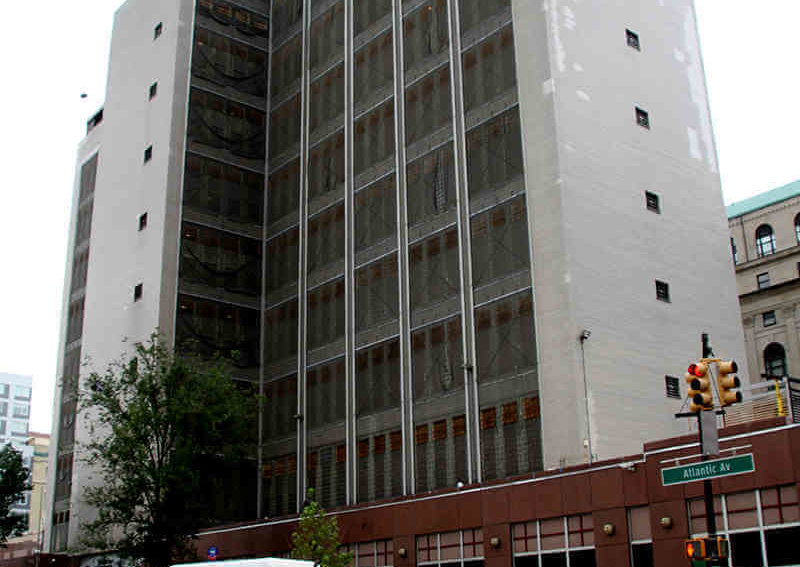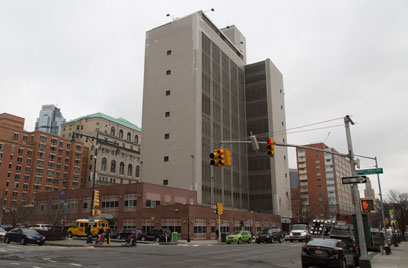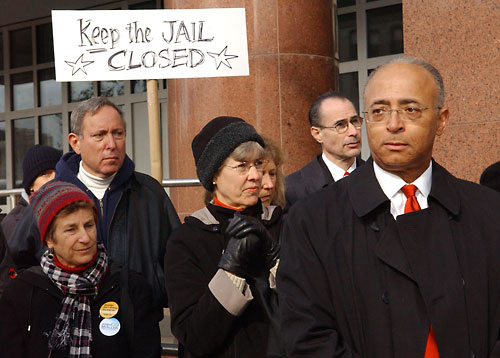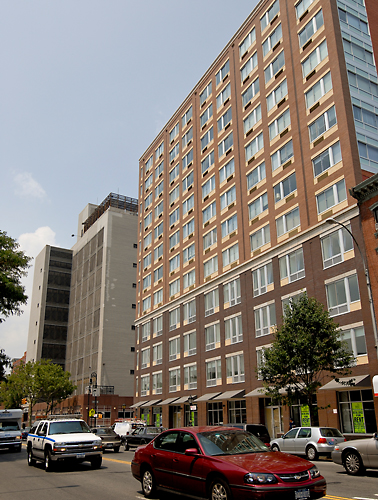City Hall must be more transparent about its plans to demolish the Brooklyn House of Detention and rebuild a larger lockup in its place, local civic leaders said Friday.
“They haven’t been transparent and we don’t want to respond, we want to be part of the decision making,” said Sandy Balboza of the local advocacy group Atlantic Avenue Betterment Association. “They call it a borough jail — this is a neighborhood jail, this is in our neighborhood.”
Officials with Mayor Bill de Blasio’s Office of Criminal Justice and the Department of Corrections took the Atlantic Avenue jail out of operation around mid-December, when they moved all 390 detainees there to other facilities in Manhattan, the Bronx, and Rikers Island.
Throughout that process, city reps met with the Neighborhood Advisory Committee — a group of local civic leaders and stakeholders — on Dec. 13, and then with Community Board 2’s Land Use Committee on Dec. 18, but didn’t tell either group that the facility had already moved out its detainees and effectively ceased operations. The city would ultimately wait until Jan. 2 to announce the closing through a Brooklyn Paper report, without alerting local civic gurus.
“I am disappointed to be learning these milestones from the media,” said Community Board 2’s District Manager Rob Perris. “I asked MOCJ and community assistant units to be more forthcoming with information.”
Council approved de Blasio’s land use application on Oct. 17 to construct four jails in all borough’s except Staten Island — part of the city’s $8.7 billion plan to close Rikers Island by 2026, which came with assurances from First Deputy Mayor Dean Fuleihan that officials would regularly meet with the communities surrounding the new jail sites.
Without regular updates, civilian watchdog groups cannot anticipate the impact of construction, and not monitor spending to ensure that billions of dollars in taxpayer funds are used appropriately, according to one local civic honcho.
“All of Brooklyn will be interested to know when they close Atlantic Avenue, State Street or Boerum Place — it’ll be a mess,” said the Boerum Hill Association’s president Howard Kolins. “We’d like to set up a regular communication about what’s going to happen on the site regarding noise, debris, and asbestos removal.”
Kolins went on to claim that private developers have been operating with great transparency and with more open lines of communication than his own government, saying constructing firms such as Alloy Development — which is building the controversial 80 Flatbush mega-project — offer to connect local civic leaders to company liaisons, who do a good job of picking up the phone.
“Nearby residents have the cellphone number of the construction manager, people are very accessible and that’s very appreciated,” he said. “If there’s an issue people know who to call and [Alloy Development] have been proactive with telling people what they’ll be seeing.”
Now Balboza is demanding more than just regular presentations — she wants a seat at the table — and says the city should create some apparatus for advocates to provide meaningful oversight of the jail’s construction and its criminal justice initiatives, including expanded pretrial services and programs designed to divert people away from incarceration.
“We’re looking for a way the community can participate and not just sit down and listen to a presentation,” she said.
A spokeswoman for Mayor de Blasio did not immediately return a request for comment.























